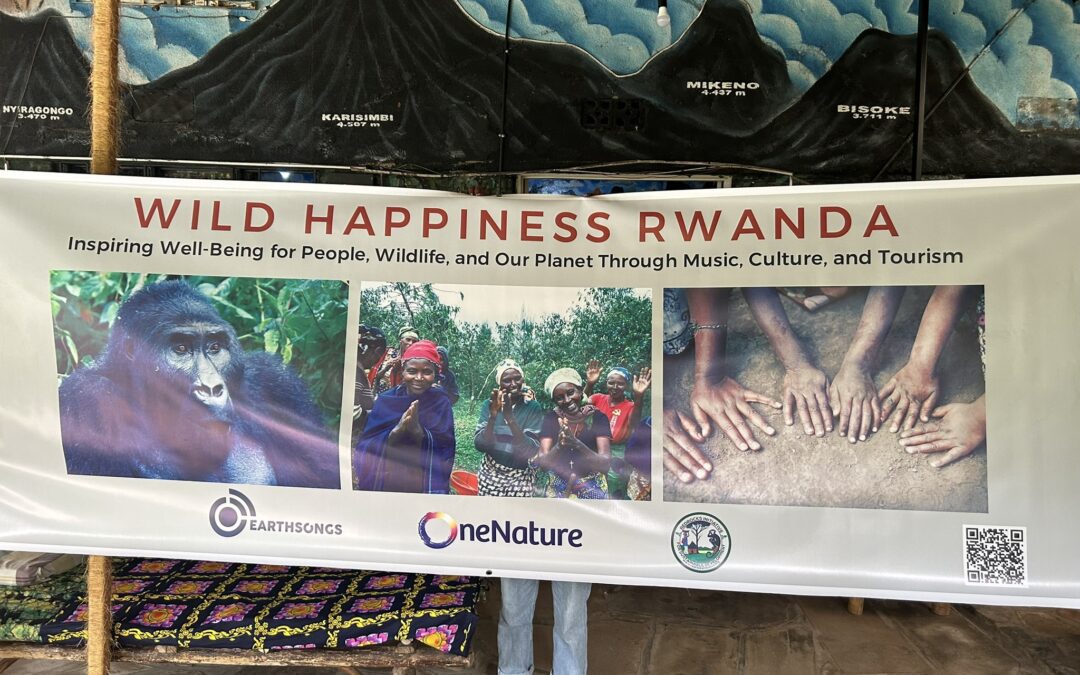Global communities that have relied on some level of U.S. support are facing an uncertain future. The pause and potential withdrawal of long-term funding through USAID programs leave a significant gap—one that threatens the resilience of local ecosystems, economies, and well-being. At OneNature, we believe that well-being must remain at the heart of sustainable development efforts, even as traditional funding landscapes change.
To address this pressing need, we are launching the Wild Happiness Capacity Building Model, a structured, scalable framework designed to empower organizations in conservation, environmental sustainability, and community development. This model is not just about short-term solutions—it’s about long-term resilience.
Why Local Capacity Matters Now More Than Ever
The departure of major aid programs places local communities at a crossroads. Without strategic support, they risk losing critical resources that drive environmental protection, social equity, and economic stability. OneNature’s Wild Happiness Capacity Building Model can equip organizations with the skills, knowledge, and tools to integrate local community well-being into their decision-making and co-create and drive holistic solutions. Whether for climate resilience, conservation, eco-tourism, or ESG initiatives, this model provides a practical and scalable framework that can be applied across sectors and regions. Through targeted training, hands-on support, and a progressive capacity-building structure, organizations can enhance their impact while strengthening community-led initiatives.
The Wild Happiness Framework follows a structured Five-Step Process:
- Deep Listening: Engage with communities to understand their values, aspirations, and needs.
- Baseline Measurement: Adapt the Wild Happiness Index to assess holistic well-being.
- Community Feedback: Share results with the community for co-analysis.
- Co-Creation: Collaboratively design conservation strategies with clear success metrics.
- Monitoring & Adaptation: Continuously track well-being and adapt interventions as needed.
To bring this structured approach to organizations, OneNature offers the Capacity Building Model, structured into three progressive levels, each designed to meet organizations’ capacities and resources and guide them toward deeper engagement and impact.
-
Level 1: Building the Foundation – This stage establishes a well-being baseline through staff training, well-being surveys, and expert recommendations. Organizations gain foundational insights that help reduce resistance to new projects while ensuring alignment with local needs. Establishing measurable well-being benchmarks at this stage provides a clear starting point for capacity development.
-
Level 2: Deepening Engagement – Organizations move beyond foundational work to actively engage with communities. By fostering trust and transparency through deep listening sessions and participatory survey designs, organizations can ensure that their initiatives reflect community priorities. This phase also provides tools for continuous monitoring, allowing organizations to adapt interventions based on real-time feedback and ensure long-term sustainability.
-
Level 3: Transformational Co-Creation – At this advanced stage, organizations co-design adaptive, community-driven solutions. Through collaborative workshops and strategic planning, organizations and communities create initiatives that are scalable, sustainable, and fully supported by local communities. By achieving this level, organizations establish themselves as recognized leaders in conservation and sustainability, demonstrating long-term benefits for people, wildlife, and ecosystems.
Key Benefits for Organizations, Donors, and the Private Sector
By participating in the Wild Happiness Capacity Building Model, organizations can:
-
Foster meaningful community engagement by integrating local voices into conservation and sustainability efforts.
-
Enhance impact measurement using well-being benchmarks, ensuring projects align with both community and environmental goals.
-
Strengthen relationships and trust with local communities, reducing resistance and improving project longevity.
-
Position themselves as leaders in ethical conservation and sustainability practices.
-
Align with global sustainability goals, such as the UN Sustainable Development Goals (SDGs), enhancing their credibility with donors and stakeholders.
-
Create lasting ecological and social benefits by embedding well-being into conservation, climate resilience, and sustainability projects.
Introducing the Wild Happiness Certification
Beyond the model itself, organizations that successfully implement these strategies can become eligible for the Wild Happiness Certification. This certification serves as a trust marker, recognizing organizations that have effectively embedded well-being into their conservation and sustainability efforts. By achieving the certification, organizations can demonstrate their commitment to long-term, impactful change, gaining credibility and support from donors, partners, and communities.
How to Get Started
📥 Download the PDFs at onenature.org to understand how the Wild Happiness Capacity Building Model and Certification can elevate and transform your projects.
🔗 Read more and access the full framework here:
Wild Happiness in Conservation
➡️ Next Steps: Reach out to partner with OneNature by emailing us at allgood@OneNatureInstitute.org
The time to act is now. Together, we can ensure that well-being remains at the core of sustainable development—filling the gap left behind and creating lasting change.
With Gratitude
Beth Allgood and the OneNature Team


